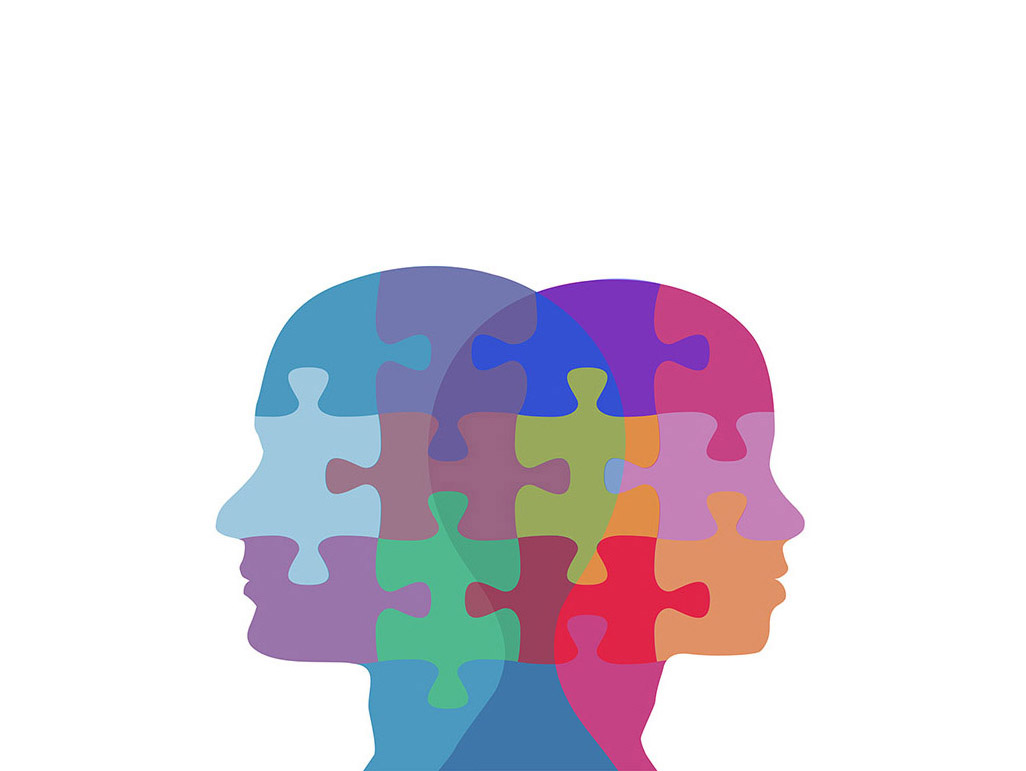Bipolar disorder is a mental health diagnosis that directly affects 2.6 percent of adults in the United States each year—that’s about 5.7 million people. The number of children and teens is in dispute, as the method of diagnosis ranges depending on the treatment provider. Someone who has bipolar disorder will go through periods of clinical depression and periods of either mania or hypomania.
The general definition of depression is more widely known, but in clinical depression the person may be unable to function, have occasional to constant thoughts of suicide, and have severe issues with thinking and concentration. They can also have symptoms of the general definition of depression such as sadness, crying, hopelessness, fatigue, insomnia, and oversleeping.
When someone is experiencing mania, they may feel elated, have insomnia but not feel tired, and develop delusions of grandeur (such as believing that they are the most important person in the world.) They can be easily distracted, engage in risk-taking behaviors, seem constantly wired, have an increased sense of well-being, and it can be hard to understand that person as their speech may seem disjointed or nonsensical. Like clinical depression, mania often leads to a loss of the ability to function.
In hypomania, unlike mania, the person diagnosed with the disorder has a higher likelihood of being able to go about their normal activities. All the symptoms mentioned above might be present but in a muted quality. A person experiencing hypomania might impulsively buy something that cost $300, even if that meant that they might need to live on Ramen for a month or longer. Someone who experiences mania might buy a $30,000 car that they could not afford, leading to missed payments, repossession, and ruined credit.
The problem with mania is that it can often feel enjoyable while it is happening. Compared with the symptoms of clinical depression, mania can feel like a welcome and deserved break. However, at some point it often feels very scary. The person diagnosed with bipolar disorder may feel that they have lost all control over their thoughts, emotions, and actions. They may feel trapped in their symptoms and unable to find a way out of the mania. After the mania is over, the person may feel anxious and depressed when it comes to any damage that might have been done.
The cause of bipolar disorder remains a partial mystery. Scientists believe that problems with brain chemistry play a part. Having a family member with bipolar disorder means one is at higher risk of developing it. Stressful life events, substance abuse, and traumas can lead to developing the disorder as well. A website focused on bipolar disorder, bphope, reported that the “University of Manchester (UK) study which looked at more than thirty years of research into bipolar disorder found that people with the disorder are 2.63 times more likely to have suffered…abuse as children than the general population.”
Mental health workers tend to prescribe mood stabilizers for those with bipolar disorder, and recommend some type of talk therapy. Sometimes other medications are prescribed as well, such as sleep aids, small doses of antidepressants, or antipsychotics (for manic symptoms).
While medication and therapy are all well and good, there are other things that people need to do on their own to be able to lessen or even prevent difficult episodes. These are coping skills, and they can be anything that is positive and helpful, such as reaching out to friends and family, meditating, spending time with pets, exercising, attending support groups, and keeping track of moods. No coping skill is a magic bullet; there is no cure for bipolar disorder. It can take a lot of time and effort for people with bipolar to put so much into their own recovery, but it’s completely worth it to do so.
